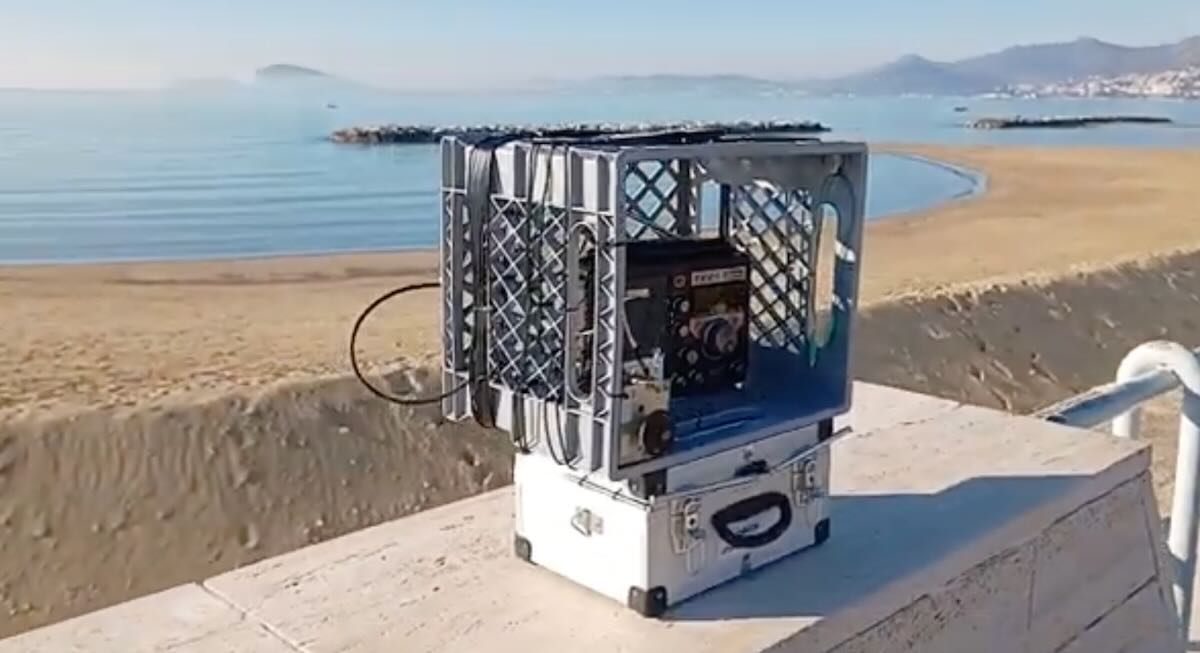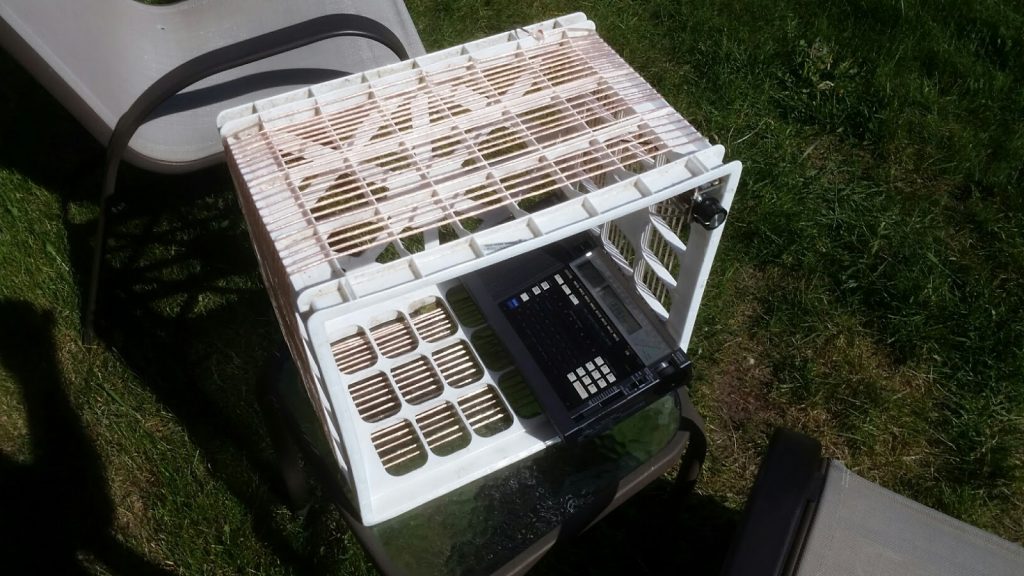Many thanks to SWLing Post contributor Giuseppe Morlè, who shares the following guest post:
Dear Thomas and Friends of SWLing Post,
I am Giuseppe Morlè from Formia, a town in central Italy on the Tyrrhenian Sea.
I have built a new “Multiloop” antenna using a 40 cm diameter milk crate. The crate is very sturdy and shockproof, making it an excellent base for this project.
Construction Details
I wound three different loops on the crate:
1. A single shortwave coil
2. Two shortwave coils
3. Twelve medium-wave coils
The design includes a single coil placed between the two shortwave coils, which picks up the signal by induction and transfers it to the receiver via an RG58 cable.
The heart of this system is a 2,100 pF variable capacitor with sockets connected to the rotors. Inside the crate, I added another 18 cm diameter loop positioned just below the two main coils.
The ends of this small loop are attached with crocodile clips to the external ends of the rotor. This small loop allows me to exploit induction and, by turning the capacitor, access all decametric bands from 160 to 10 meters.
Tuning Ranges
The variable capacitor enables tuning as follows:
-
-
- In the lower ranges, it covers 80 to 20 meters.
- When reversed, it tunes all higher ranges from 10 to 20 meters.
-
This works because the small loop and capacitor couple inductively with the primary turns. By increasing capacity with cables on the rotors, the antenna can even tune up to 160 meters.
The medium-wave turns cover frequencies from 300 kHz to 1,900 kHz. Essentially, this Loop Milk Crate antenna can access a wide range from 300 kHz to 30 MHz.
Testing and Comparisons
I tested the antenna using the Tecsun PL-660 and the Tecsun S-8800 receivers. I also compared the Loop Milk Crate with my “Ferritona” antenna and found surprising results!
Some of the videos were filmed in my shack because it was too cold to work on the balcony. Other videos were shot outside, either on my balcony or on the beach in Formia.
Videos
Final Thoughts
I hope you enjoy my “crazy” constructions. Always remember, I’m not a technician—just a passionate listener who loves building with recycled materials.
Wishing everyone a year full of happiness and satisfaction!
Best wishes to all,
Giuseppe Morlè


